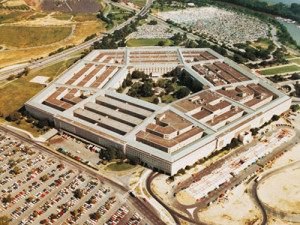
Space systems are first fruits of DoD’s ‘third offset’ strategy
DoD's number-two official points to Joint Interagency Combined Space Operations Center as the first operational example of the Pentagon's "third offset" strategy.
A year and a half after Defense officials first began talking about a “third offset strategy,” a project the department has pointed to as its first example is beginning to come online.
The Joint Interagency Combined Space Operations Center is meant to protect satellites from potential attack, including ones operated by non-Defense agencies or allied countries. The JICSpOC is currently in its fourth and final series of experimentation periods since it was first created last October at Schriever Air Force Base in Colorado, and on its way to becoming a permanent organization that’s meant to bring federal agencies’ management satellites under one roof and ensure that vital functions like GPS and myriad other vital technologies are more resilient against attack.
Initially, officials are using the center to think through ways for DoD and the intelligence community to protect their space-based communications and surveillance capabilities from anti-satellite weapons.
“We know that our potential competitors are looking at the space capabilities we’ve assembled over the years and concluded that if they ever did cross swords with the United States, they would want to disable our space systems first,” Robert Work, the deputy secretary of Defense, said at a forum organized by The Washington Post on Wednesday. “They have been planning to attack our constellations. We have considered space to be a safe sanctuary for a long time, so a lot of our systems are big and expensive. They’re enormously capable, but they’re also enormously vulnerable.”
DoD views the JICSpOC as the first operational element of the third offset strategy, which generally seeks to keep DoD ahead of the military technology curve by combining commercial and military-specific innovations in creative ways, including through human-machine teaming and deep learning computing systems.
In the case of space, that will mean shifting the U.S. government’s capabilities from satellites that cost hundreds of millions of dollars each — plus, hundreds of millions of dollars each to launch into orbit — to constellations of many, many more cheaper and smaller satellites that, in theory, would not only boost information gathering and communications capabilities, but be much harder for a potential adversary to destroy with a missile.
“We can distribute our capabilities amongst systems that have fuel that allow them to maneuver away from anti-satellite weapons. We’ll have better situational awareness that tells us exactly what we’re doing,” Work said. “The JICSpOC is designed to look up and ask, ‘What are the threats doing? How can we move our assets to make sure we retain all our current capabilities?’”
Though the JICSpOC is mainly focused on DoD and the intelligence community’s existing satellites for the moment, officials also plan to use it to make much more use of the burgeoning commercial space industry’s capabilities for government purposes.
Work mentioned one such company in particular: San Francisco-based Planet Labs, which has designed “nanosatellites” that are only about a foot in length.
“They’re going to have about 150 of these small satellites they call ‘Doves’ in a sun-synchronous orbit, and it’s basically going to be a line scanner going around the entire planet every single day,” Work said. “They’re going to be bringing down about 10 terabytes of data every day, and we will use deep learning machines to find out what’s happening on the globe. For an adversary, it’s very expensive to fire an anti-satellite weapon. It’s very hard to bring down something that’s a foot long, let alone 150 of them. So we’re very confident that this part of the offset strategy is going to let us continue to provide the support our warfighters need with a combination of commercial technologies and disaggregating our own systems.”
In the space domain and in the remainder of the technological spaces, DoD wants to pursue via its offset strategy, the department has been taking extra care in recent months to reassure its traditional vendors that it is not abandoning them, despite the recent hype involving its creation of the new Defense Innovation Unit-Experimental in northern California and Defense Secretary Ashton Carter’s many public proclamations emphasizing the need to reestablish links with Silicon Valley.
Earlier this week, Carter and Frank Kendall, the undersecretary of Defense for acquisition, technology and logistics, met with the CEOs of traditional prime Defense contractors in a closed-door, off-the-record session that the companies had requested.
“Our message to them is, ‘Look, we value your innovation too, but this is an awfully big stage with an awful lot going on. Let’s make sure we can tap into every single aspect of American innovation,’” Work said. “We have the most innovative industrial base in the world. Our big primes are constantly coming to us with new ideas. But the period we’re in is kind of like the inter-war period between World War I and World War II. Everyone knew that there was radio, everyone knew there was mechanization, everyone knew there was aviation, and all of those advances were happening in the private sector. Some of our then-competitors, like Germany, put those things together in ways that were militarily-relevant. We want to apply the same principle to current technologies, like artificial intelligence and autonomy. We have to be able to connect operational problems that we have within the Pentagon with the commercial sector.”
Copyright © 2025 Federal News Network. All rights reserved. This website is not intended for users located within the European Economic Area.
Jared Serbu is deputy editor of Federal News Network and reports on the Defense Department’s contracting, legislative, workforce and IT issues.
Follow @jserbuWFED





